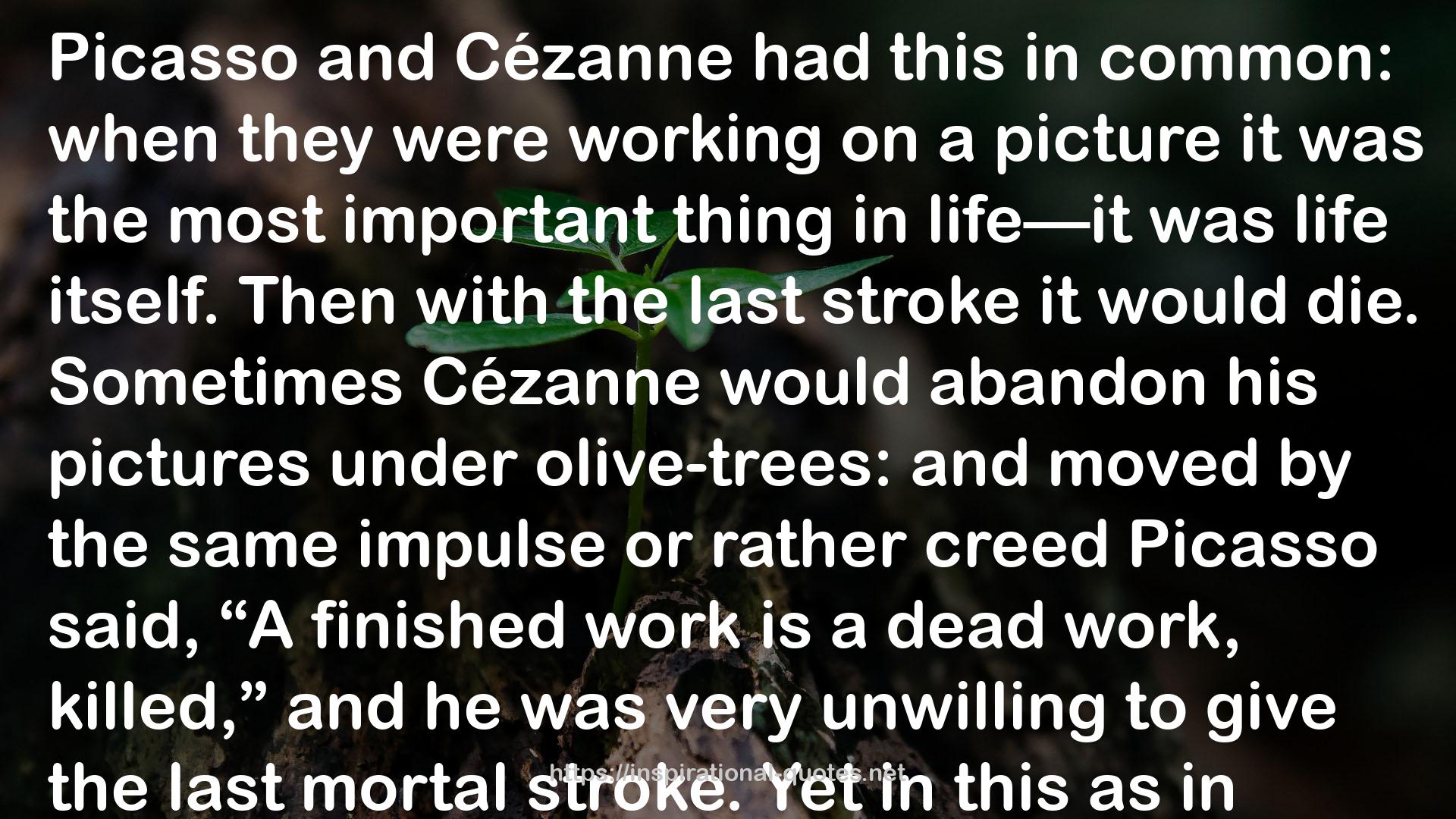" Picasso and Cézanne had this in common: when they were working on a picture it was the most important thing in life—it was life itself. Then with the last stroke it would die. Sometimes Cézanne would abandon his pictures under olive-trees: and moved by the same impulse or rather creed Picasso said, “A finished work is a dead work, killed,” and he was very unwilling to give the last mortal stroke. Yet in this as in everything else Picasso was full of apparent inconsistencies: the man who maintained that the “Demoiselles d’Avignon” was never finished and who spent months and months on Vollard’s portrait would also dash off three pictures in a day; he did not leave a few dozen laboriously perfected paintings behind him but several thousand; and although he said that his work was of no interest to him once it was done he would fly into a pale rage if he saw one of his pictures, or Cézanne’s, varnished, cleaned, or interfered with in any way. What is more, although the whole of his work was carried out in contemptuous defiance of the critics, he was exceedingly sensitive to approval: even in his eighties he would still show people his work, piling the canvases up in a tottering pyramid and watching intently for the reaction. "
― Patrick O'Brian , Picasso: A Biography
